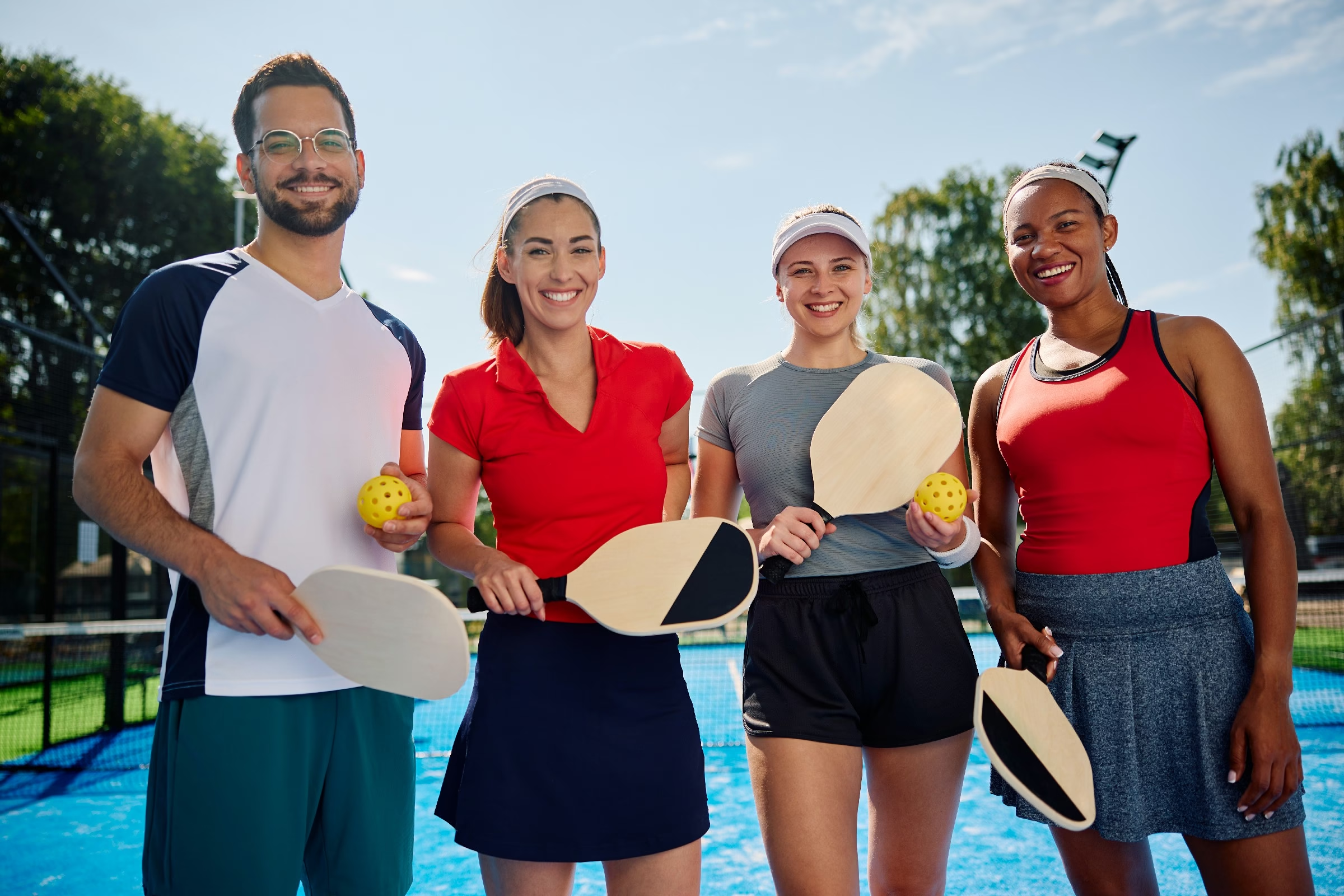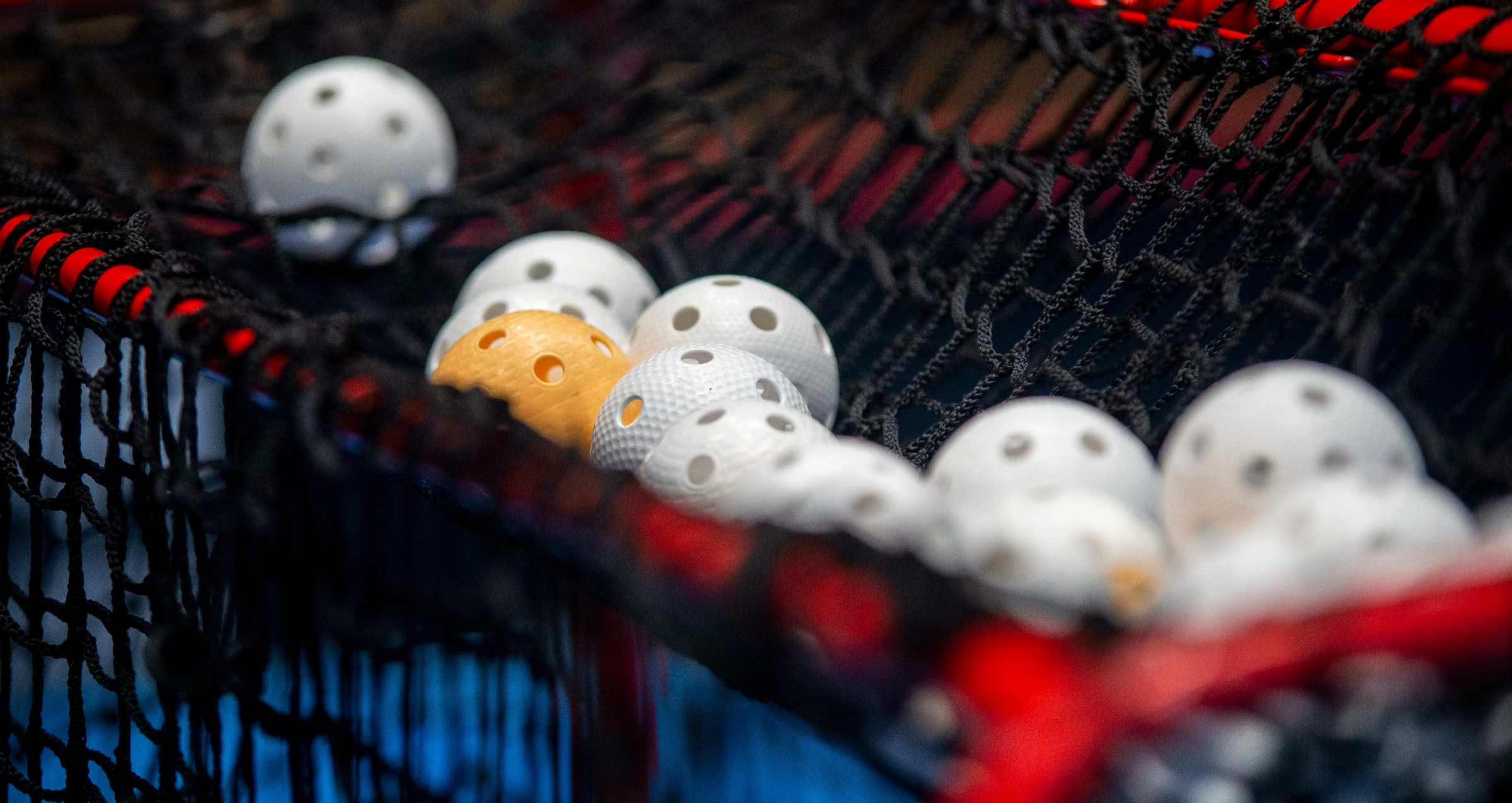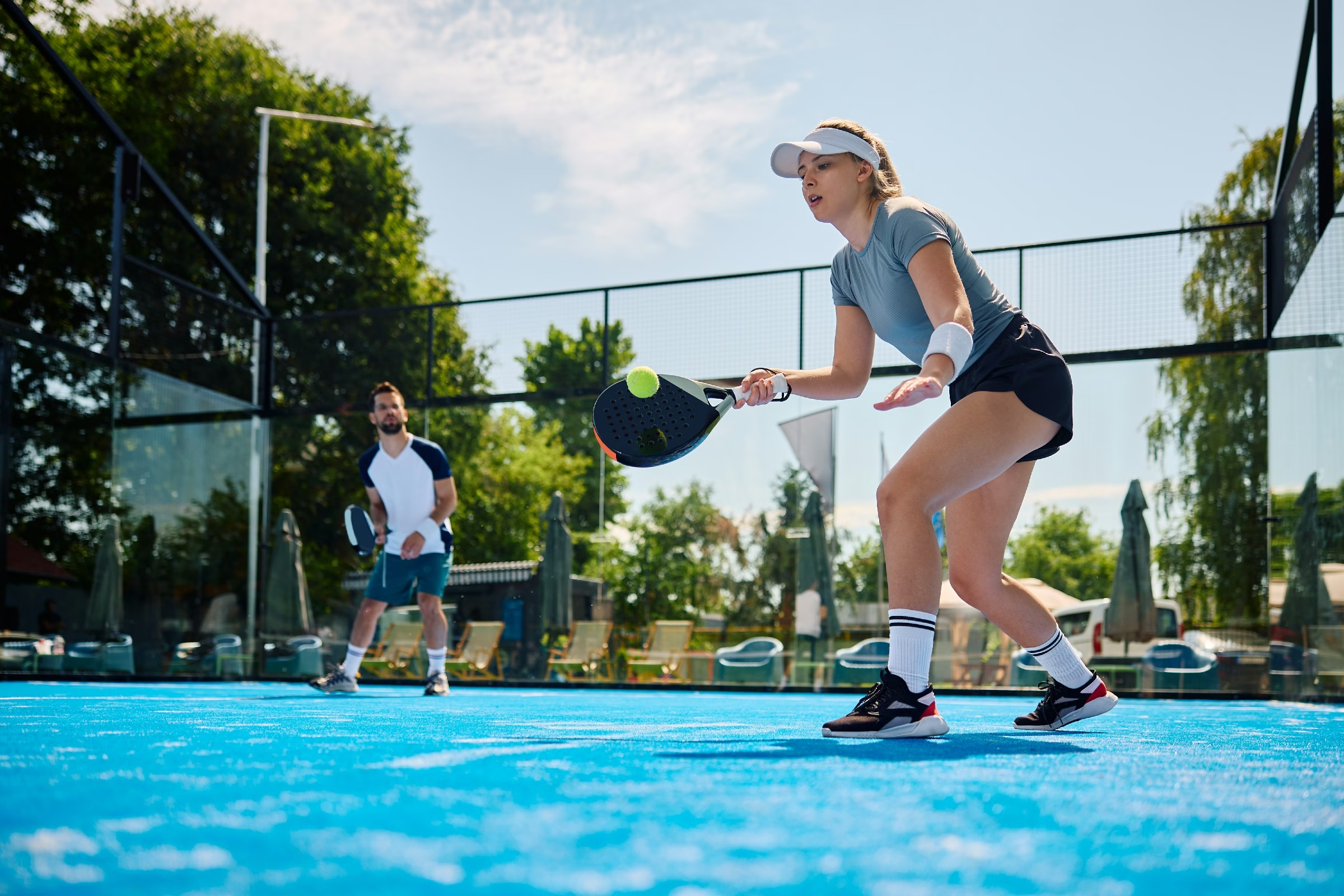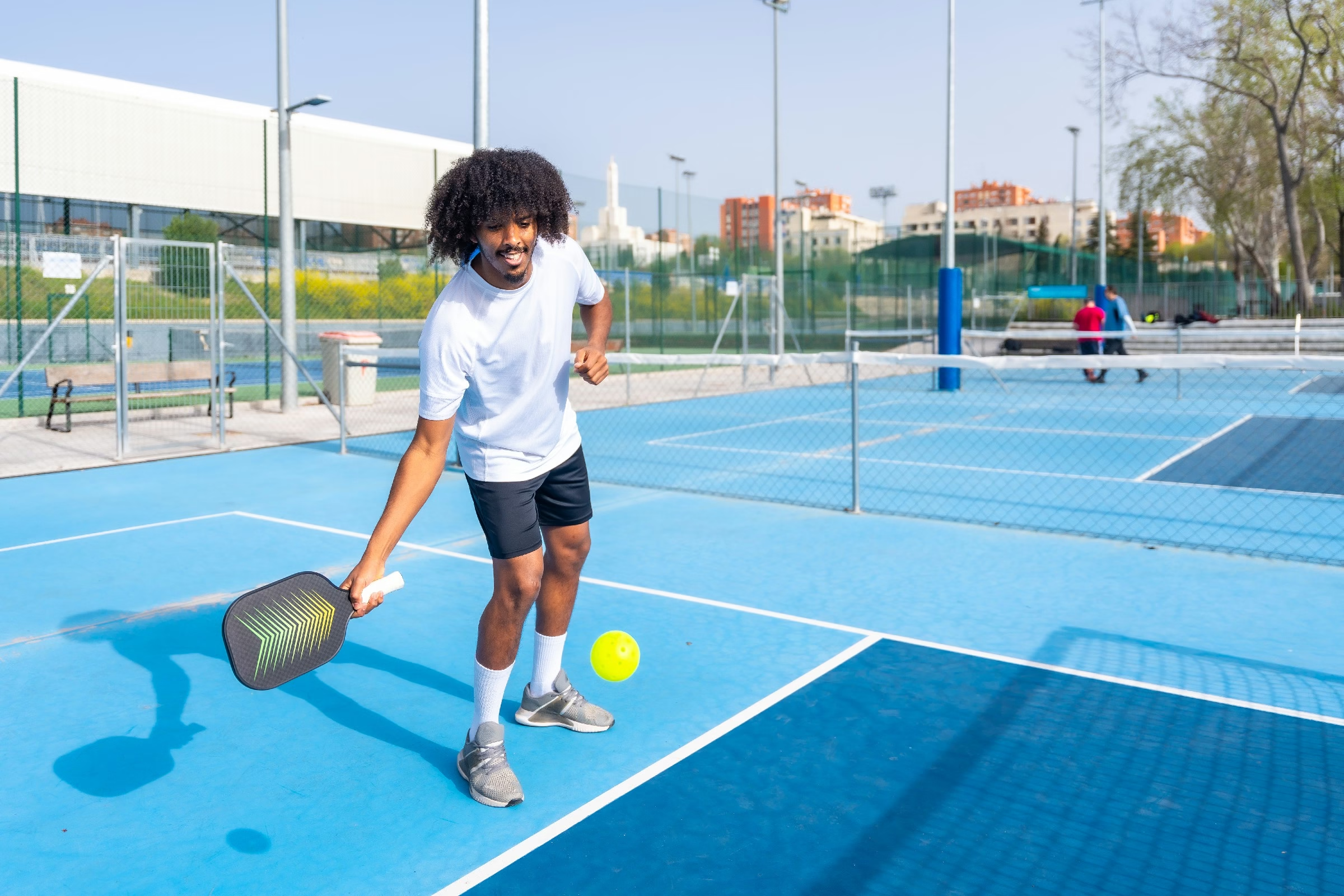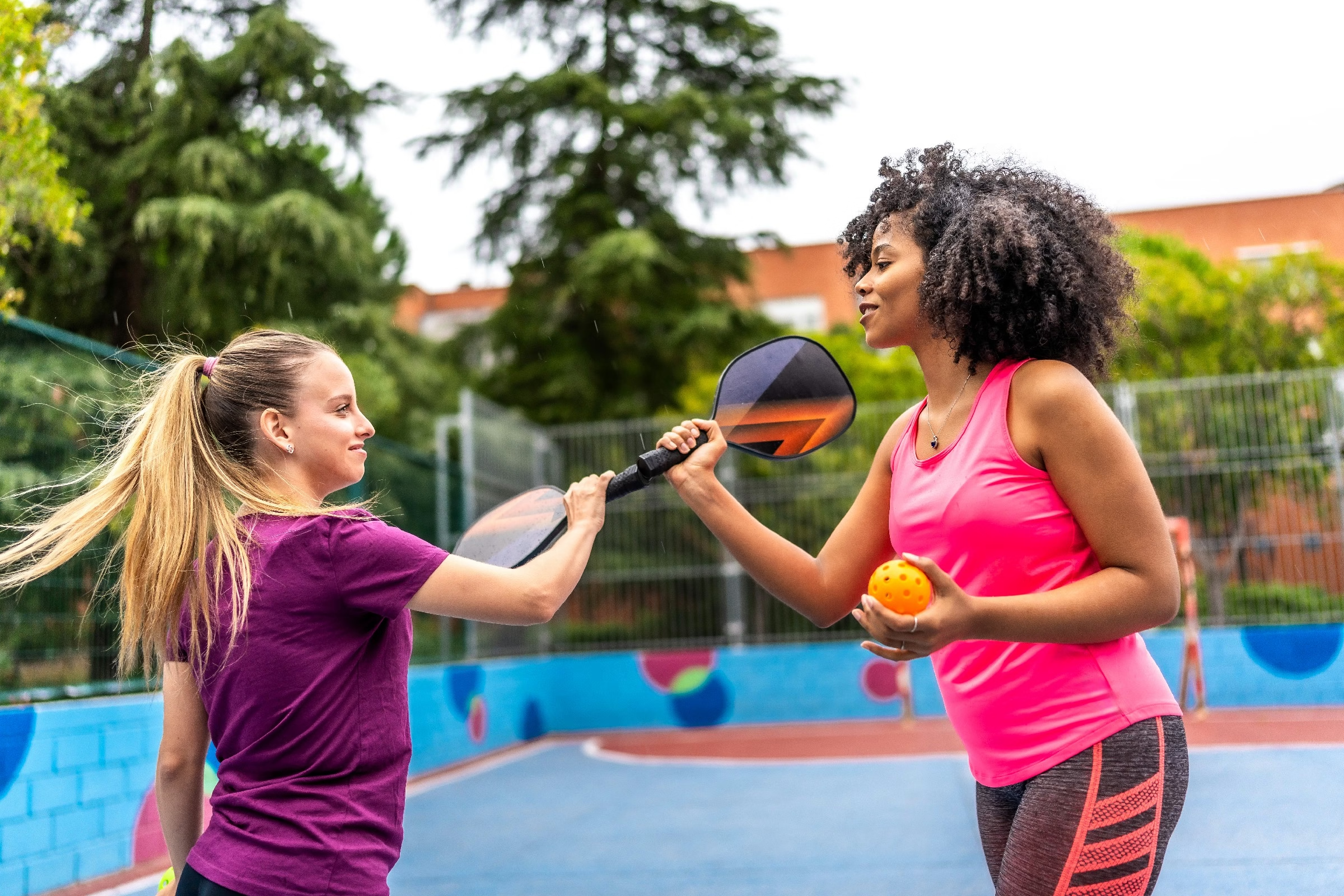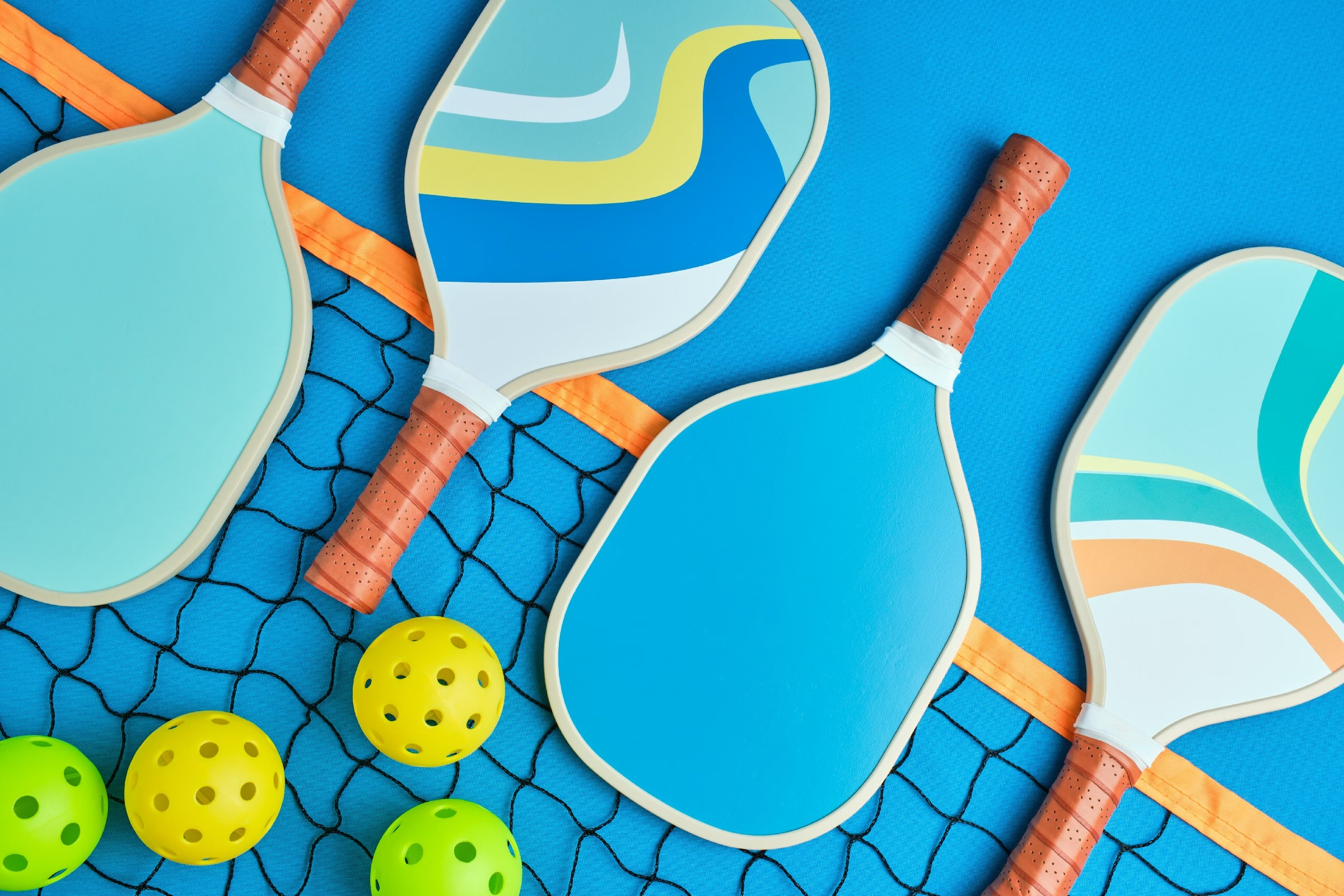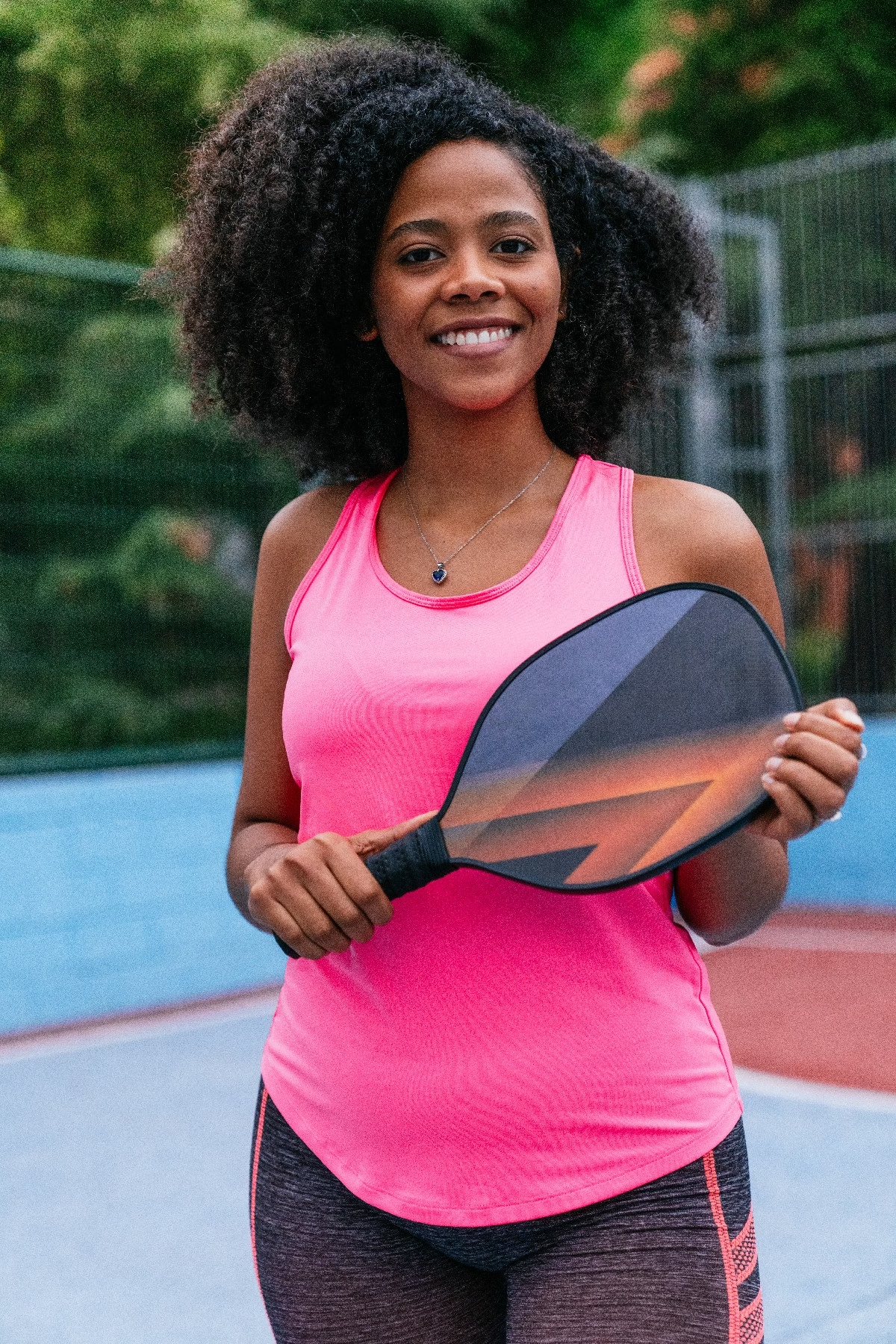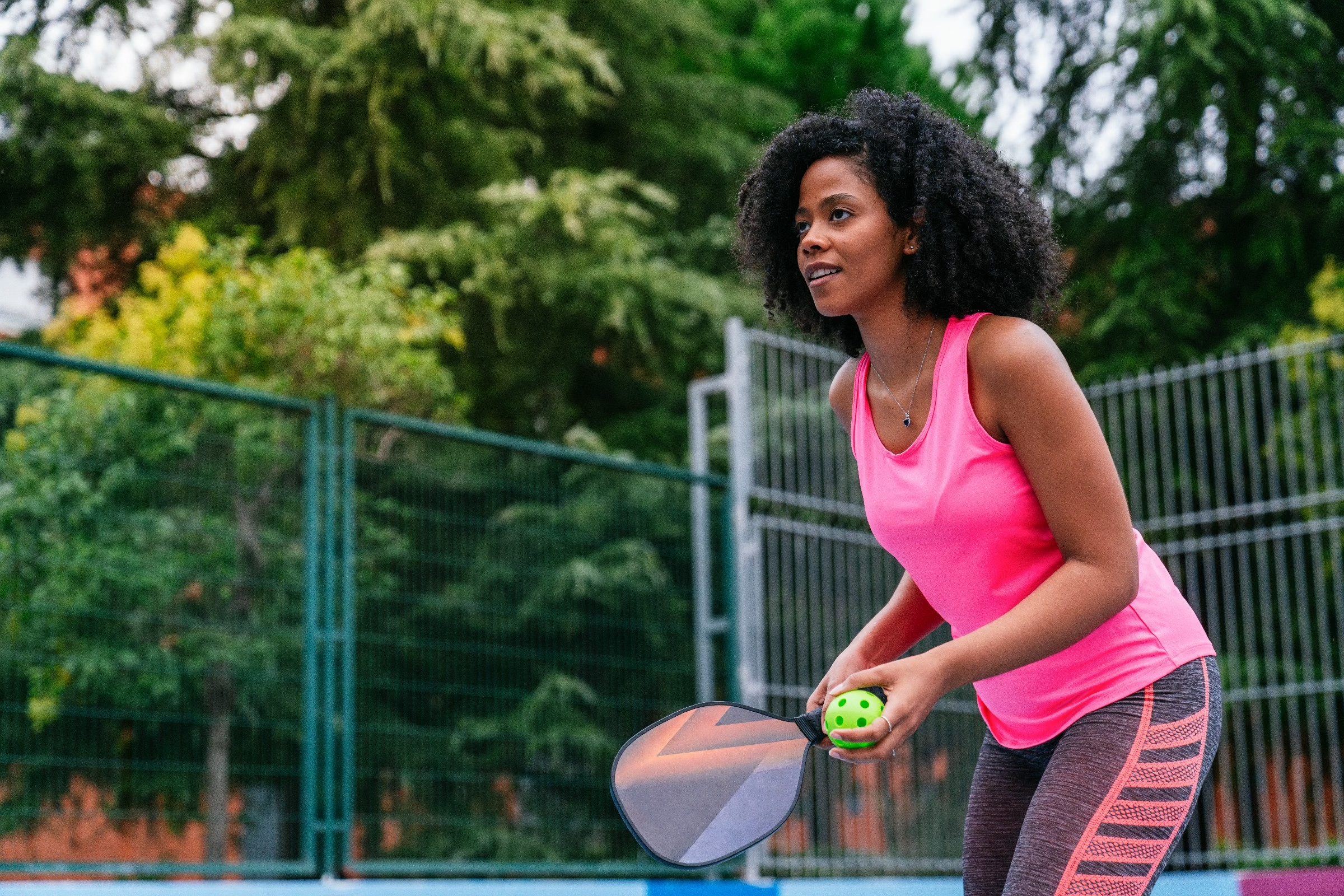Blog
how to drive pickleball
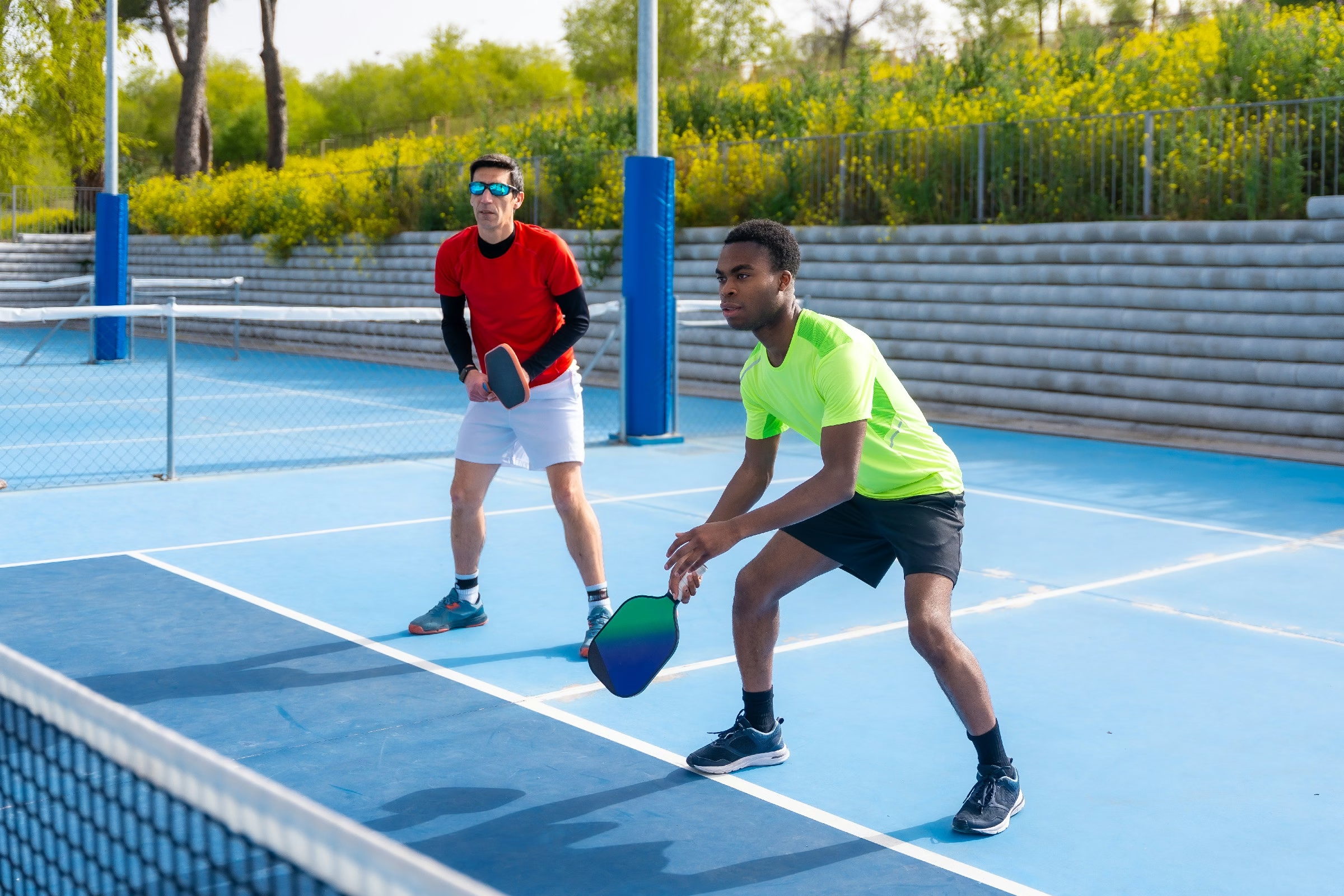
Unlocking the Court: A Guide to Mastering Pickleball Driving
As the sun shines down on the vibrant courts adn the unmistakable sound of paddles striking balls fills the air, the game of pickleball has surged in popularity, capturing the hearts of both seasoned athletes and curious newcomers alike. With its unique blend of tennis, badminton, and ping-pong elements, pickleball offers an exhilarating challenge and a social experience that draws players from all walks of life. Among the essential skills that can elevate your game is the art of driving—the powerful, precision-based shot that can leave opponents scrambling. In this article, we’ll delve into the techniques, strategies, and insights needed to master driving in pickleball. Whether you’re looking to overpower your competition or simply refine your skills for a casual weekend match, this guide will equip you with the tools to take your pickleball game to new heights.So grab your paddle and prepare to dive into the dynamic world of driving, where each stroke can make a difference on the court.
Table of contents
- Understanding the Fundamentals of a Pickleball Drive
- Mastering Grip Techniques for Optimal Control
- Harnessing the Power of Footwork in Your Drive
- Developing Effective Follow-Through Strategies
- Common Mistakes to Avoid While Driving the Ball
- Incorporating Spin for Added Precision and Variety
- Q&A
- Key Takeaways
Understanding the fundamentals of a Pickleball Drive
To master the drive in pickleball, it’s essential to grasp its core mechanics. A drive is characterized by its powerful, flat trajectory aimed at overpowering your opponent. To achieve this, focus on body positioning and footwork. Utilize a stable stance with your knees slightly bent and your weight evenly distributed. As you prepare to hit the ball,shift your weight from your back foot to your front foot,generating momentum that will enhance your shot.
Another crucial aspect of executing a accomplished drive lies in your grip and swing technique. using a firm grip—whether it be the eastern, Continental, or western grip—affects the angle and spin of your shot. Your swing should be a concise, controlled motion that combines both confidence and precision. For optimal performance, aim to make contact with the ball at waist height, allowing for a more powerful drive that can effectively penetrate your opponent’s defense.
as you practice your drives, consider some common mistakes that players make, which can impede their progress:
| Mistake | Consequence |
|---|---|
| Hitting the ball too late | Results in a weaker shot and loss of control |
| overextending the arm | Causes a lack of accuracy and increased chance of errors |
| Incorrect grip | Leads to inefficient ball control and undesirable shot outcomes |
By reflecting on these fundamentals and integrating proper techniques into your play, you’ll set the stage for a powerful and effective drive on the pickleball court.
Mastering Grip Techniques for Optimal Control
Having a solid grip on your pickleball paddle is essential for mastering the game. The way you hold your paddle can significantly influence your control, shot precision, and overall performance on the court. To cultivate the perfect grip, consider the following techniques:
- Continental Grip: This versatile grip allows you to execute a range of shots, from serves to volleys, making it ideal for beginners and advanced players alike.
- Eastern Grip: Best suited for forehand shots, this grip provides excellent power and spin, allowing for aggressive gameplay.
- Western Grip: Although less common, this grip facilitates strong topspin shots, making it notably useful for players who focus on aggressive baseline play.
Experimenting with these grips can definitely help you find what feels most comfortable and effective for your style of play. You may also consider adjusting your grip pressure during play; a looser grip can aid in better maneuverability and touch, while a firmer grip provides more stability and control, particularly during powerful swings. Observing how different grip pressures affect your performance can lead to a nuanced understanding of your capabilities on the court.
To further enhance your grip technique, practice with various drills that emphasize grip strength and versatility. incorporating exercises such as wrist rotations,squeezes with a tennis ball,or using grip trainers can be quite beneficial. consistent practice alongside adjusting your grip for different shots will steadily progress your skill level. Remember, an optimal grip is not just about the right hold; it’s about the right mindset toward continual improvement.
Harnessing the Power of Footwork in Your Drive
In the exciting realm of pickleball, mastering your footwork is essential to unleashing a powerful drive. Your footwork serves as the foundation of your entire game; without solid footwork, even the best techniques can falter. Focus on maintaining a low center of gravity, which allows for better balance and quicker reactions. Staying light on your feet enables you to reposition swiftly, so you can set up for an effective shot. Remember, the goal is to always be in the right place at the right time, making your movements decisive and purposeful.
As you begin to integrate footwork into your drives, consider employing a few fundamental strategies:
- Split Step: Initiate each point with a split step, which prepares your body for the next movement.
- Shuffling: Use lateral shuffling rather than crossing over; this technique ensures you can quickly adapt to changing angles and keep your posture intact.
- Plant and Pivot: When executing a drive,planting your lead foot firmly helps generate power,while pivoting allows you to transition smoothly into the next movement.
To visualize these concepts, consider the following table that outlines the benefits of excellent footwork during a drive:
| Footwork Technique | Benefit |
|---|---|
| Split step | Enhances reaction time |
| Lateral Shuffle | Keeps you balanced |
| Plant and pivot | Increases shot power |
By diligently practicing these techniques, you will soon notice a meaningful improvement in your drives. Footwork is not just about movement; it’s about creating opportunities. When your feet move efficiently, your body can follow with precision and strength, ultimately transforming your play style. The fusion of well-executed footwork and power-driven strokes will elevate your game to new heights, making every rally an exhilarating challenge.
Developing Effective Follow-Through Strategies
When perfecting your pickleball drive, mastering follow-through is essential. A strong,consistent follow-through not only ensures your shot’s accuracy but also helps you maintain balance and prepare for the next move. Here are some key elements to focus on:
- Warm-up & Stretching: Prior to practice, ensure you properly warm up and stretch to enhance flexibility.
- Grip & Stance: Maintain a relaxed grip and a stable stance to anchor your body during the shot.
- Follow-Through Path: visualize a smooth, upward motion after contact with the ball to promote the correct trajectory.
Incorporating drills into your practice routine can further cement your follow-through skills. Consider these effective drills:
| Drill | Description | Objective |
|---|---|---|
| Wall Rebound | Hit the ball against a wall and practice your follow-through. | Aiming for fluid motion and control. |
| Partner Drills | Work with a partner to hit drives back and forth. | Focus on maintaining consistent follow-through. |
| Target Practice | Set up targets on the court and aim your drives. | Improve precision and follow-through accuracy. |
Lastly, mental visualization can be a powerful tool to enhance your follow-through technique. Before each match or practice session, take a moment to visualize your perfect drive, focusing on every component, including the follow-through.Combine this visualization with your physical practice to create a holistic approach that reinforces both mind and muscle memory, leading to more effective and confident plays on the court.
Common Mistakes to Avoid While Driving the ball
when driving the ball, players often fall into the trap of poor stance and posture. An unbalanced setup not only affects power but also accuracy. To ensure you’re in the best position:
- Keep your feet shoulder-width apart to maintain stability.
- Bend your knees slightly to lower your center of gravity for better control.
- Align your body towards your target for more effective shots.
Another common error is rushing the swing. Many players feel pressured to hit the ball as hard as possible, leading to hastiness and mistakes. Instead, focus on timing and technique to enhance your drive:
- Watch the ball closely to ensure you make contact at the right moment.
- Follow through with your swing to add more power without sacrificing control.
- Practice deep breaths before your shot to maintain composure and focus.
Lastly, neglecting to observe your opponent’s position can significantly hinder your performance. Understanding where your rivals are positioned allows for smarter shots. Consider this table for a fast reference on how to utilize this strategy effectively:
| Opponent Position | Driving Strategy |
|---|---|
| Near the net | Hit deep towards the back corners to push them back. |
| Out of position | Aim for open spaces to exploit their lack of coverage. |
| In a defensive stance | Use angles to force them into uncomfortable positions. |
Incorporating Spin for Added Precision and Variety
Understanding how to add spin to your pickleball shot can dramatically enhance your game, allowing you to dictate play and keep your opponents guessing. To effectively incorporate spin, focus on the angle of your paddle and the contact point on the ball.Using the topspin technique,which involves brushing up on the back of the ball,adds a forward rotation that increases its speed and bounces higher. This can be particularly useful on serves or groundstrokes, where a sudden jump off the court can catch your opponent off guard.
Conversely, backspin can be your secret weapon when you’ve found yourself in a defensive situation. By brushing downwards on the ball, you create a low bounce that can force your opponent to hit up on the ball, which is often a challenging adjustment.Additionally, experimenting with sidespin allows you to create unpredictable angles that can exploit gaps in your opponent’s coverage. This can come in especially handy during doubles when coordination between two players becomes crucial. Here are some effective situations for employing each type of spin:
| Spin Type | Best Used During | Effect on Opponent |
|---|---|---|
| Topspin | Serves, Groundstrokes | Balls bounce high, challenging volleys |
| Backspin | Defensive Shots, Drop Shots | low bounce, forcing upward hits |
| Sidespin | Cross-Court Shots | Unpredictable angles, creating openings |
Incorporating spin not only adds variety to your gameplay but also provides strategic advantages. Mastering these techniques can transform the way you play, keeping your opponents on their toes as they scramble to adjust to the unpredictable movement of the ball. Remember, practice is vital—work on these spins in different drills and scenarios to build confidence and effective shot placement under pressure. With time and consistency, you’ll find that these new dimensions to your game make a significant impact on your overall performance and enjoyment on the court.
Q&A
Q&A: How to Drive in Pickleball
Q1: What is a drive in pickleball?
A1: A drive in pickleball refers to a powerful and flat shot typically aimed at your opponent. It’s performed with a full swing and is executed to generate speed and pace, making it challenging for your opponent to return.
Q2: When should I use a drive shot?
A2: You should consider using a drive when the ball is at a comfortable height, typically waist-high or lower. It’s an effective shot when you want to put pressure on your opponent, especially when they are out of position or when they present a weaker return.
Q3: How do I execute a perfect drive shot?
A3: To execute a perfect drive,start by positioning yourself properly and maintaining a stable stance. grip the paddle firmly but relaxed, and as the ball approaches, pivot your body, rotate your shoulders, and initiate a backswing.Aim to strike the ball with the center of the paddle face, utilizing a level swing to maintain control while generating power. Follow through towards your target to ensure accuracy.
Q4: What are common mistakes to avoid when driving?
A4: Maintaining the right balance is crucial; avoid leaning too far forward or backward. hitting the ball too high can lead to a less effective shot, so aim for that ideal waist height. Additionally, don’t forget to follow through—many players halt their swing prematurely, which can lead to inaccurate shots.
Q5: How can I practice my drive effectively?
A5: Practice is essential! Start by working with a partner or a wall. focus on your technique by repetitively hitting balls at the ideal height. You can also incorporate target practice by placing cones or targets on the court to aim at during your drills. As you improve,try to add variations in speed and angle to develop a broader range of drives.
Q6: What should I do if my drive shots are consistently going out of bounds?
A6: If your drives are sailing out, consider adjusting your paddle angle and your follow-through. Practice hitting a bit softer and controlling your swing path. Conduct drills that emphasize precision over power until you can confidently place your drives within the court.
Q7: Can drives be used defensively?
A7: Yes! While drives are typically offensive shots, they can be utilized defensively when you need to return an opponent’s fast-paced shot.Use quick reflexes to respond with a well-placed drive that disrupts your opponent’s rhythm while keeping the ball in play.
Q8: How does the drive fit into my overall pickleball strategy?
A8: The drive is a powerful tool in your pickleball arsenal. It can set you apart by allowing you to dictate the pace of the match. Integrating drives into your game plan, alongside more strategic shots like dinks and lobs, will create unpredictability and give you a competitive edge. Balance is key—know when to offensively push through with drives and when to play tactically.
By mastering the drive, you not only enhance your individual skills but also elevate the overall dynamic of your matches, making them more engaging and enjoyable for both you and your opponents. Happy driving!
Key Takeaways
As we wrap up our exploration of how to drive pickleball, it’s clear that mastering this skill can elevate your game and enhance your enjoyment on the court. Whether you’re an eager beginner or a seasoned player looking to refine your technique, remember that practice is key. Embrace the challenges, learn from your mistakes, and celebrate your progress.
Just like every good drive requires focus and intention,so does every journey toward improvement. Keep your eye on the ball, your mind open, and your spirit resilient. With dedication and the tips shared in this article,you’ll soon find yourself not only driving the ball with precision but also driving your passion for the game deeper.So grab your paddle, hit the court, and let the exhilarating rhythm of pickleball unfold—your best match is just a swing away!

